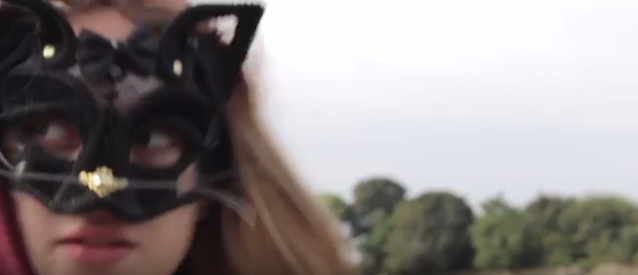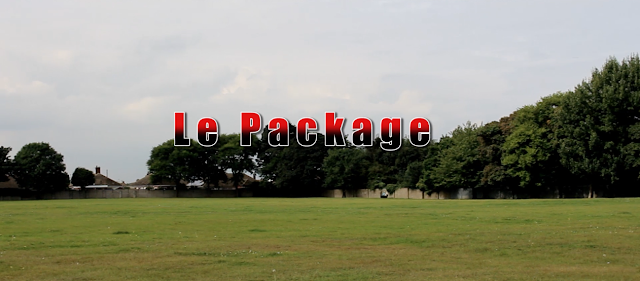Le Package
As a induction task we were given a brief that meant we could only use 20 shots to create a short production, where we could only use one camera movement, and many other restrictions. When we were given the list of restrictions i doubted that we would be able to pull it off. However, after quite a long section of planning we managed to pull of the short with under 20 shots.
Throughout the short we used natural lighting due to the availability and also we felt that if we used artificial lighting, then we would maybe loose the "naturalistic" feel throughout the film. Using the natural light also allowed us to connote a more sinister feel as it made the environment darker.
However, for a few of the shots we used the "Three Way Color Corrector" to make the overall look of the shot slightly darker as the natural light made parts of the shot over exposed. As well as this, the darker colours in the shot connote a darker, more dangerous atmosphere.
In this shot we used our camera movement to show Faye hiding from Luke in the tree to a over the shoulder shot of her looking down at Luke searching for her. This helps the audience understand that she can see who is chasing her and that she is hiding from him.
An establishing shot is the first shot of the scene showing the audience where the scene is set so they don't get confused when the characters change location. Conventionally the establishing shot has a camera movements such as a pan or a zoom, so we followed this convention with a pan at the beginning of the film.
A close up shot is when the camera is very close to the subject/object the audience need to focus on. We used close ups several times throughout the film, but in this case we used it to connote the significance of the "Package".
This is a extreme close up. An extreme close up is when you position the camera uncomfortably close to the subject in the shot.We used it to show Faye's face when she looked behind her to see Luke chasing her.
We used a fade to show time passing and from when the field was largely empty, to when the subject dropping off the package was on the bench and then the impressionist comes to pick up the package.
The mise-en-scene in this scene is the male character in the hoodie on the graffiti-ed bench with the litter on the floor connoting a slightly run down area.
A match on action is when you show the audience a character looking out of frame/shot then you cut to a shot of what they are looking at. We used this technique when Luke looked at Faye walking away and looking back. We cut from a mid-shot of look looking out of shot to a wide / POV shot of Faye walking and putting her mask on. In this sequence of shots, we tried to create a shot-reverse shot sequence from the wide angle shot of Luke taping my shoulder to a over the shoulder shot of me looking up at him then a POV shot of us Luke looking at Faye. We accidentally broke the 180 degree rule because we shot the over the shoulder shot over the wrong shoulder, yet we got away with this because of the wide shot of Luke walking towards me on the bench, showing the audience where we were in comparison to each other.
In conclusion i have not learnt that much during this task, as i had already been taught these filming techniques in GCSE Media Studies, though i found it helpful to recap the techniques. On the editing side of the task, i learnt how to adapt the levels of the ambient sound to make it work with the Non-diagetic sound (The music that the audience can here but the subjects in the "Movie World" can not). I prefer to do the editing of a film but i also enjoyed doing the cinematography side of this project.













Some good points made Luke though at times I think you could have explained things a bit further, and it could have been ore wide ranging (eg soundtrack?). Nevertheless promising work. Next time push yourself a bit harder as although I have given it a merit it's probably on the pass/merit border. Please capitalise the work 'I'.
ReplyDelete